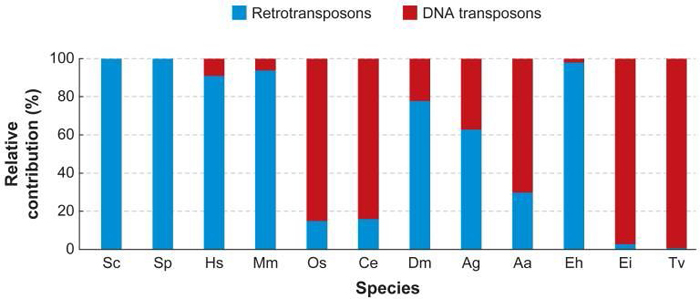
Summary
In bacteria, two categories of specialized recombination promote a variety of DNA rearrangements. Transposition is the process by which genetic elements move between different locations in the genome, while site-specific recombination is a reaction in which DNA strands break and are exchanged at precise positions of two target DNA loci. to achieve a specific biological function. Both types of recombination are represented by diverse genetic systems that generally encode their own recombination enzymes. These enzymes generically called transposases and site-specific recombinases can be grouped into several families on the basis of amino acid sequence similarities that, in some cases, are limited to the signature of a few residues involved in catalysis.

The well-characterized site-specific recombinases are found to belong to two distinct groups, while the transposases form a large superfamily of enzymes encompassing recombinases from both prokaryotes and eukaryotes. Despite important differences in the catalytic mechanisms used by these three classes of enzymes to cut and rejoin DNA molecules, similar strategies are used to coordinate the biochemical steps of the recombination reaction and control its outcome. This review summarizes our current understanding of site-specific rearrangement and recombination, attempting to illustrate how relatively conserved DNA cut-and-paste mechanisms can be used to elicit a variety of complex DNA rearrangements.
Keywords:
Transposon, Site-specific recombination, Recombination mechanism, Nucleoprotein complex